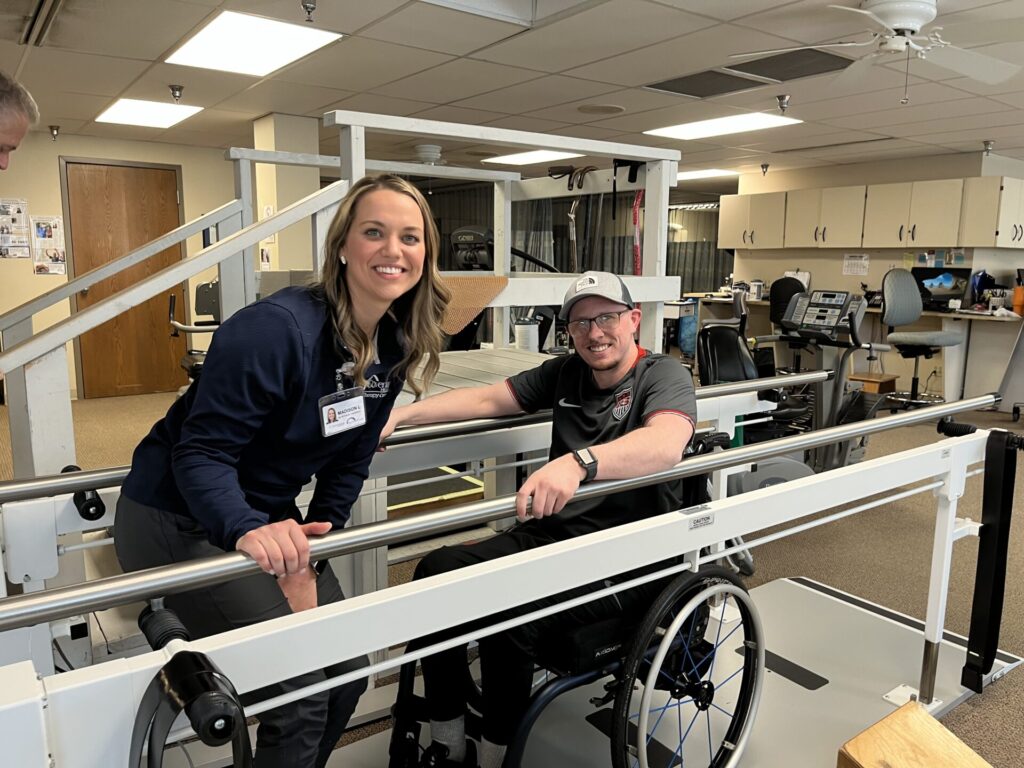- Find a DoctorDoctors by Specialty
- Cardiac Electrophysiology
- Cardiology
- Colon & Rectal Surgery
- Family Medicine
- Gastroenterology
- General & Vascular Surgery
- Gynecological Oncology
- Gynecology
- Infectious Disease
- Internal Medicine
- Interventional Cardiology
- Interventional Radiology
- Nephrology
- Neurology
- Neurosurgery
- Obstetrics & Gynecology
- Oncology
- Oncology & Hematology
- Orthopedic Surgery
- Otolaryngology
- Perinatology
- Psychiatry
- Pulmonary Medicine
- Radiation Oncology
- Rheumatology
- Sleep Medicine
- Thoracic Surgery
- Urology
- View All Doctors
- Our ServicesMedical Services
- Bariatric Services
- Behavioral & Mental Health
- Breast Care
- Cancer Care
- Critical Care
- Ear, Nose, & Throat
- Emergency Services
- Gastroenterology
- Glossary
- Heart Care
- Home Care
- Hospice & Palliative Care
- Imaging & Diagnostics
- Long-Term Care
- Nephrology
- Orthopedics
- Primary Care
- Rehabilitation Therapies
- Robotic-Assisted Surgery
- Sleep Services
- Spine Care
- Stroke Care
- Surgery Services
- Telehealth Services
- Urology
- Urgent Care
- Virtual Urgent Care
- Women’s Services
- Wound Care
- Our Locations
- Patients & Visitors
- About Us
 As spring settles in and the weather continues to warm, this season presents a perfect time to step outside and go for a walk. Walking is a simple, yet powerful form of exercise that offers numerous benefits for overall health and wellbeing. In recent years, it has become more popular to incorporate physical activity into daily routines, including at work. Although it can be difficult at times to take a break or step outside, especially in clinical settings, even short walks can enhance mental health and improve physical health.
As spring settles in and the weather continues to warm, this season presents a perfect time to step outside and go for a walk. Walking is a simple, yet powerful form of exercise that offers numerous benefits for overall health and wellbeing. In recent years, it has become more popular to incorporate physical activity into daily routines, including at work. Although it can be difficult at times to take a break or step outside, especially in clinical settings, even short walks can enhance mental health and improve physical health.
A study by Jo Barton, of the School of Sport, Rehabilitation and Exercise Sciences at the University of Essex in the UK, studied 1,252 participants engaged in walking and gardening. Barton discovered the biggest improvements in self-esteem and mood took place in the first five minutes of these activities. A five-minute walk can be an extremely powerful tool to help the brain refocus. Other mental benefits of walking include increased energy levels, reduced fatigue, and boosted cognitive function. With this additional energy and boosted brain power, individuals can have more productivity in their workday.
Another benefit to walking is that it can also provide an opportunity for social interaction and networking. Taking a walk with colleagues can help build relationships and foster a sense of community in the workplace. One groundbreaking creative who knew the perks of walking firsthand was Steve Jobs. In his biography, Walter Isaacson mentioned that Jobs preferred taking a long walk when having a serious conversation. He was known to hold meetings while walking around with his staff and believed that his most creative ideas came while he was walking. In fact, a study by Harvard Medical School shows that those who participate in walking meetings are 5.25% more likely to be creative and 8.5% more likely to report high levels of engagement (Evans, 2021).
In addition to the mental health benefits, walking will also improve physical health. According to the American Heart Association, walking can help reduce the risk of heart disease, stroke, and type 2 diabetes, among other chronic health conditions. Even with adding an exercise as simple as walking to a daily routine, the body will feel different over time. Joints become more mobile and flexible, bones and muscles strengthen, and stamina increases.
Overall, walking at work at appropriate times has numerous benefits for both employees and employers. It can improve physical and mental health, enhance productivity, and promote social interaction. Incorporating walking into the workday can be as simple as taking a few short breaks when possible throughout the day. By supporting walking at work, employers can create a healthier and more productive workplace.
-Josh
Bratman, G. (et al). Nature experience reduces rumination and subgenual prefrontal cortex activation. Proceedings of the National Academy of Sciences, vol. 112, no. 28, 2015, pp. 8567-8572.
Elfering, A. (et al). The effects of walking on concentration and attention performance in fully rested workers. Journal of Exercise Science & Fitness, vol. 7, no. 2, 2009, pp. 58-66.
Evans, J. (2021, October 16). Here is why Apple’s Steve Jobs love to walk and so should you. Apple Must. https://www.applemust.com/here-is-why-apples-steve-jobs-loved-to-walk-and-so-should-you/#:~:text=Jobs%20believed%20his%20most%20creative%20ideas%20came%20when%20he%20was%20walking.&text=He%20often%20held%20meetings%20while,mood%2C%20and%20can%20boost%20communication
Fogarty, P. (2019, March 3). Why walking makes you a better worker. BBC. https://www.bbc.com/worklife/article/20190304-why-walking-makes-you-a-better-worker
Smith, A. (et al). Walking and job performance: A systematic review and meta-analysis. Journal of Occupational Health Psychology, vol. 25, no. 1, 2020, pp. 28-44.
“Walking: A Step in the Right Direction.” American Heart Association. www.heart.org/en/healthy-living/fitness/walking.

























